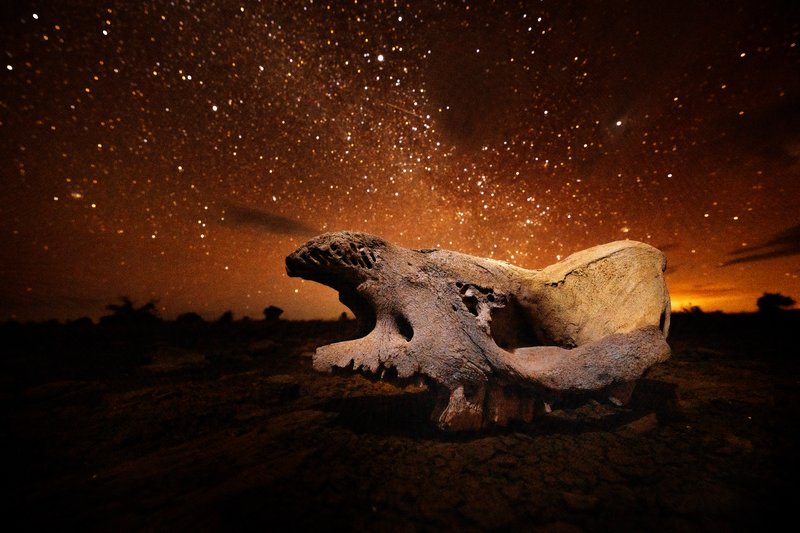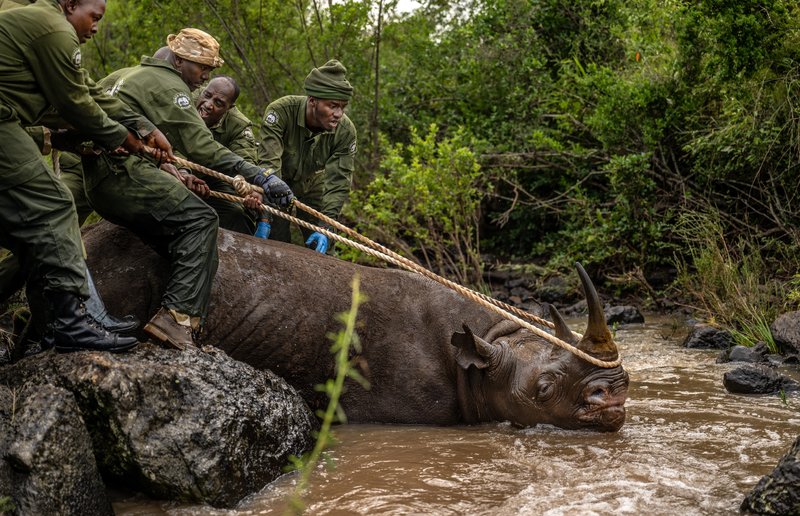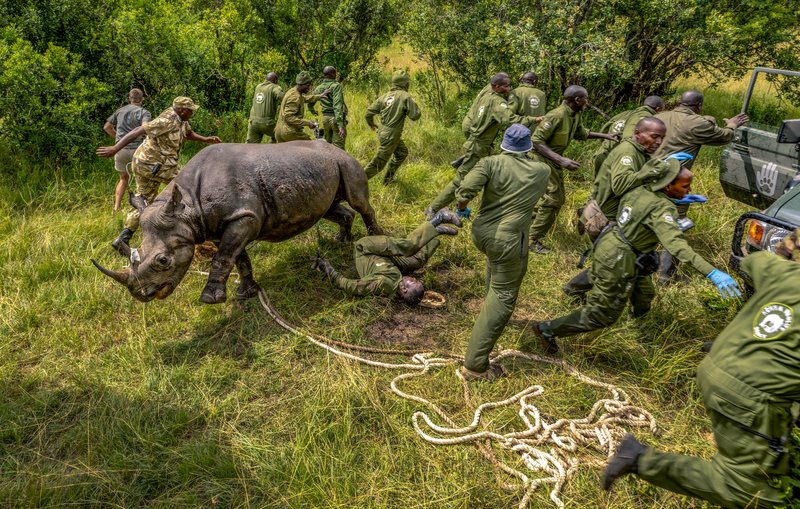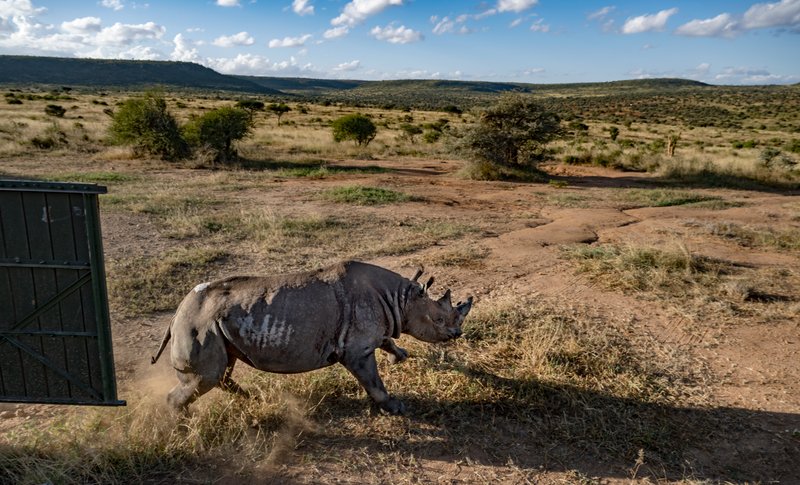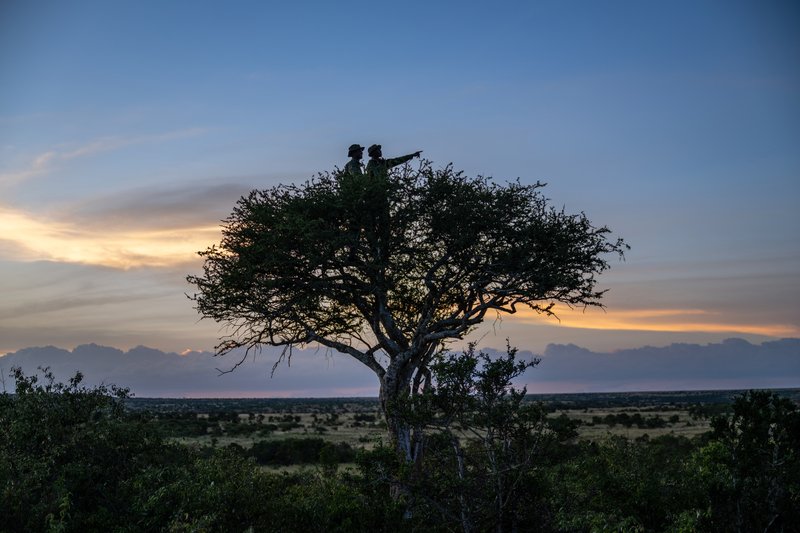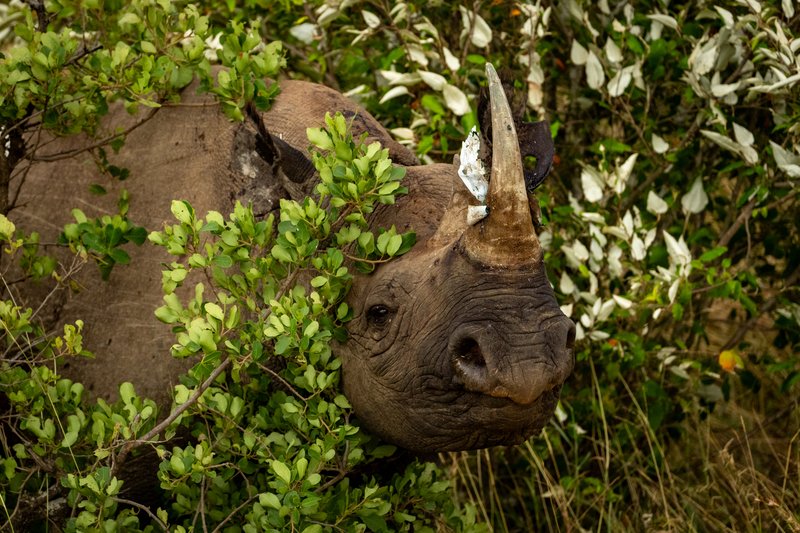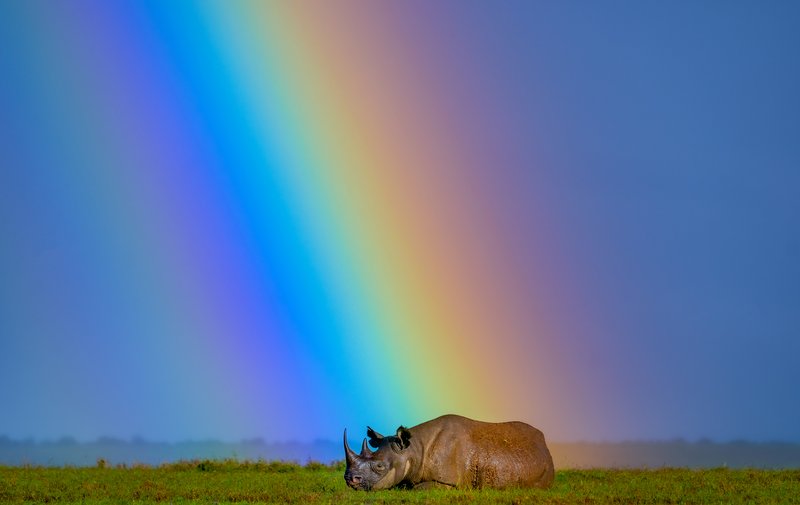First Place: Kenya's Black Rhino Revival
Kenya's Black Rhino Revival
The skull of the last black rhino who once roamed here sits as the sun sets at Loisaba Conservancy in Laikipia, Kenya. Kenya Wildlife Service (KWS) has begun translocating 21 eastern black rhinos, both male and female, to Loisaba conservancy in Laikipia County. Loisaba, which hasn't seen rhinos for 50 years due to poaching in the past, is now equipped with world-class security for its 58,000 acres. The operation not only underscores Kenya's conservation triumph but also signifies a critical step in achieving stable habitats for the survival of the species. Black rhinos once thrived across Kenya, but rampant poaching in the 1970s and '80s drove them to near extinction. However, government interventions over the past 30 years have reversed this trend. In January 2024, 21 critically endangered black rhinos were translocated to Loisaba Conservancy in northern Kenya due to overcrowding at Kenya’s 16 black rhino sanctuaries—a remarkable turnaround from the days when the population plummeted from 20,000 to fewer than 300. Now, Kenya is halfway to its goal of reaching 2,000 individuals, the minimum required for long-term species survival. The complex translocation process demanded meticulous planning and collaboration. Moving such massive animals as rhinos is both dangerous and challenging, given the stress, trauma, and potential injuries faced during transportation. Furthermore, handlers must manage these powerful creatures safely, even under sedation. The logistical complexities called for precise coordination and the expertise of veterinarians and wildlife specialists. Despite challenges, the teams worked together over three weeks to successfully relocate all the rhinos. In Kenya, wildlife preservation extends beyond conservationists and rangers; it's a societal effort ingrained in the community. This inclusive strategy reflects the nation's commitment to safeguarding biodiversity. By directly involving local communities, Kenya has instilled a sense of ownership and pride in its natural resources. The arrival of the rhinos was celebrated by neighboring communities. Community-focused initiatives and public-private collaborations continue to bolster both human and wildlife protection. Educational programs raise biodiversity awareness, while ecotourism highlights the economic benefits of sustaining healthy ecosystems. This collaborative spirit is a key reason Kenya has achieved remarkable success in conserving its rhinoceros population, maintaining a record of no poaching for many years, unlike other countries still battling rising incidents. The resurgence of the black rhino signifies a triumph for Kenyan wildlife and serves as a global blueprint for conservation efforts.
Ami Vitale
